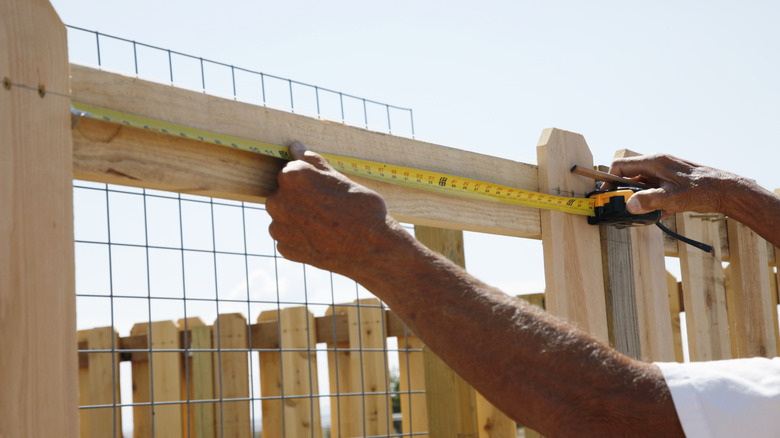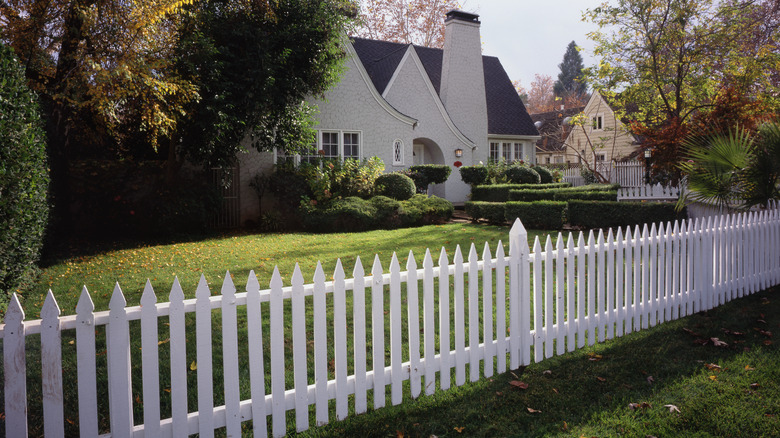Helpful Tips To Determine How Wide To Make The Gaps In Your Fence
DIYing your own fence can save thousands. One of the key decisions at the outset is how wide to make the gaps. Depending on the type of fencing chosen, there can be either one type of gap or two that need to be determined: First, there's the gap between the fence posts. Then, if you're erecting a wooden picket or panel fence, there's the gap between each upright.
Fence post gaps have a major impact on the amount of work required. Fencing professionals usually stick to one of three options: proportional, remaindered, and feathered. Proportional is where each fence post around the yard is exactly the same distance apart. It's often the most attractive solution, but there's a problem: standard fencing rails and panels, whether wood, vinyl, or metal, are usually 5, 6, or 7 feet wide. If your proportional spacing works out at 6 feet 6 inches, for example, every single panel must be modified, and trimming wood or vinyl fencing would be time-consuming. If you've chosen metal, you'll either need to get out the welding gear or have the panels custom-made. The solution is to use either remaindered spacing, where only the last panel is modified, or feathered spacing, where you alter the last two panels. From a DIY perspective, remaindered is obviously quicker and easier.
Calculating the gap width between pickets in a fence
If you're building a wooden privacy fence, you may not want gaps between the panels. However, if you're putting up a traditional picket fence for decorative purposes, or you want gaps between boards so you can see beyond the yard, the spacing between these members will also need to be determined. You have the same three options as you would when calculating the gap width between posts — proportional, remaindered, and feathered. And since pickets are significantly slimmer than panels, the proportional method is much easier to achieve without having to modify the vertical members. Remaindered and feathered methods also don't require any field cutting; you just make the last one or two gaps narrower.
However, working out those spacings can be quite a challenge, and finding out you've miscalculated when you're erecting the fence would be both frustrating and expensive. One easy tip for building the perfect fence is to use the free calculator over at Blocklayer.com to determine gap widths. The tool will do the necessary math for you in moments. Simply enter the distance between fence posts and the width of your uprights, and it will work out the gaps. It even has an interactive visual representation so you can add or subtract uprights, and it will show you what the fence will look like.

